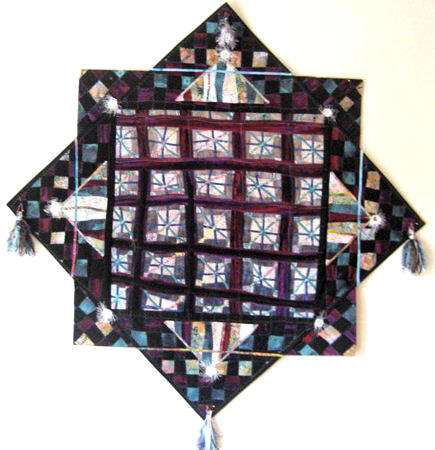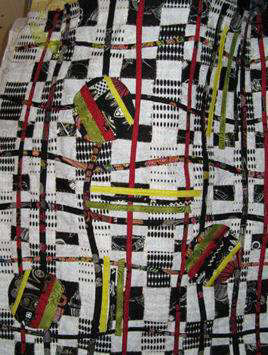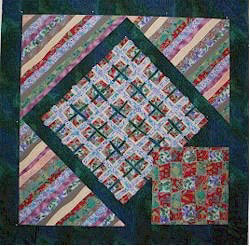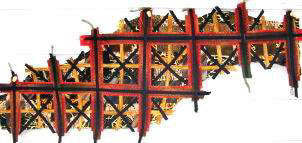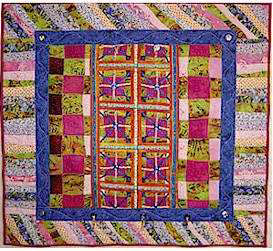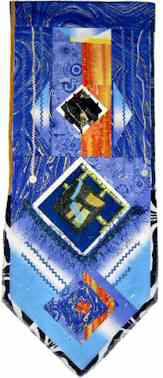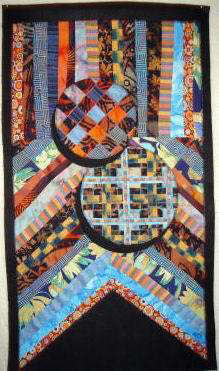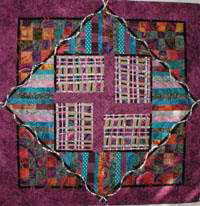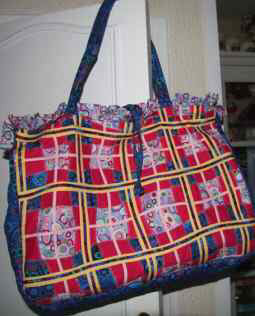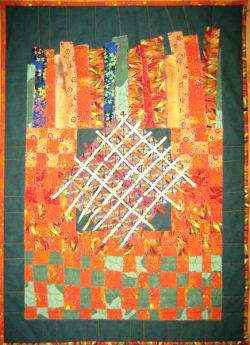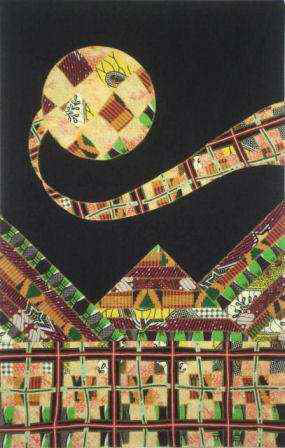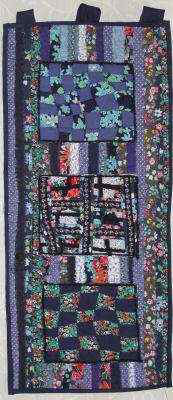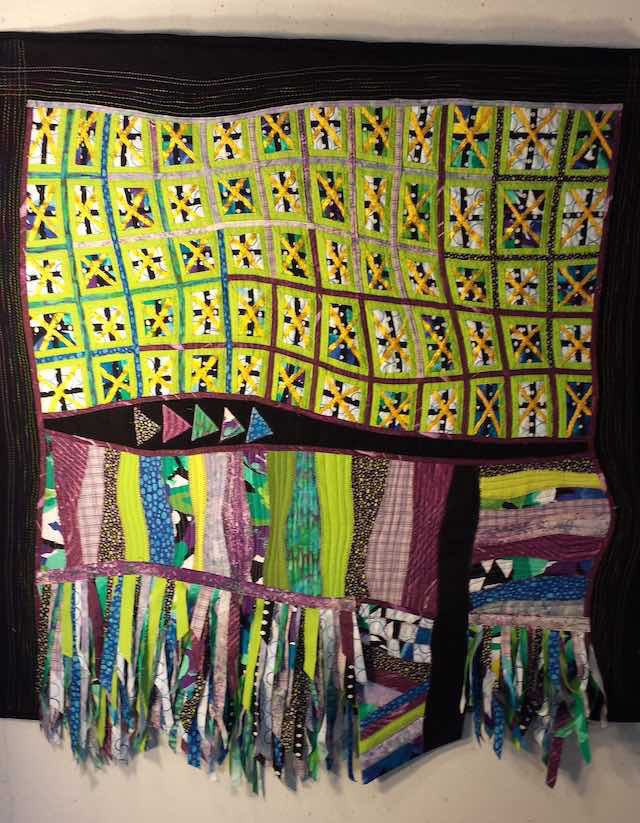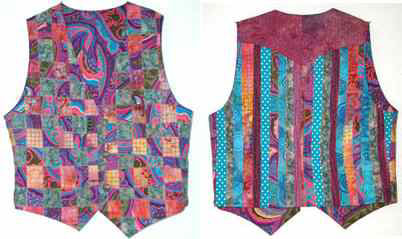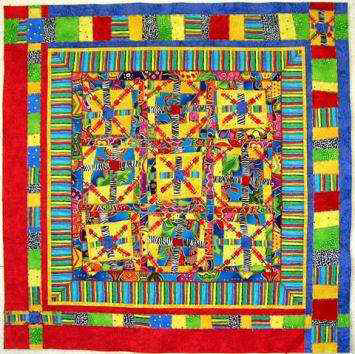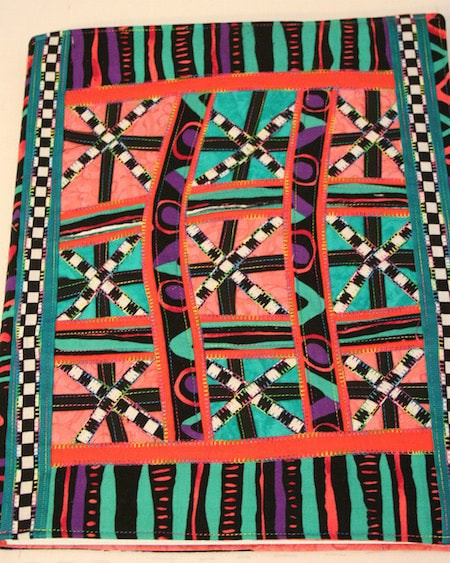Student Work with Structured Fabrics
Workshop Details for Structured Fabrics: Checks, Plaids, and Stripes
In Structured Fabrics, participants first create the three "structured" fabrics and then build an original art quilt from them. Using free-motion rotary or other cutting methods, they first build a woven check. Zigzag stitches of some kind secure the raw edges with matching or contrasting color thread.
Setting aside some of the check for later use, the participants then augment one or more sections of check with variously cut strips of cloth. With raw edges or edges turned under, these strips build a plaid from the widest to the narrowest applications, each layer revealing a peek at what lies beneath. Everything is curvy, so the plaid jumps with vibrant color.
Then, we use some strips of fabric to construct a striped cloth. This can be used whole or in sections, but it will become part of the larger composition in some way.
Finally, we cut the structured fabrics and reassemble their pieces to create a larger composition. Lots of zigzag stitches in many varieties, worked through a foundation material, hold the work together and ensure that it does not easily ravel.
The finished piece may be a work of art used as a wall hanging. Some participants in the past have used Structured Fabrics for clothing and accessories--even backpacks! The choice of how to put your Structured Fabrics to work is up to you, but you must learn to hear what the materials call for!
Structured Fabrics is for the quilter who loves materials and methods more than patterns.
Setting aside some of the check for later use, the participants then augment one or more sections of check with variously cut strips of cloth. With raw edges or edges turned under, these strips build a plaid from the widest to the narrowest applications, each layer revealing a peek at what lies beneath. Everything is curvy, so the plaid jumps with vibrant color.
Then, we use some strips of fabric to construct a striped cloth. This can be used whole or in sections, but it will become part of the larger composition in some way.
Finally, we cut the structured fabrics and reassemble their pieces to create a larger composition. Lots of zigzag stitches in many varieties, worked through a foundation material, hold the work together and ensure that it does not easily ravel.
The finished piece may be a work of art used as a wall hanging. Some participants in the past have used Structured Fabrics for clothing and accessories--even backpacks! The choice of how to put your Structured Fabrics to work is up to you, but you must learn to hear what the materials call for!
Structured Fabrics is for the quilter who loves materials and methods more than patterns.
|
|
Supply List for Structured Fabrics
Choose fabrics from your stash without shopping for new materials. Because any first attempt is a learning effort, do not use your best fabrics. Instead, use some of the ugly fabrics you have. The fabrics become so much cut up and reassembled as to become completely new materials. You will be glad to see fabrics you do not particularly like become something new and interesting.
To make any Structured Fabric quilt, you need:
To make any Structured Fabric quilt, you need:
- A fabric stash
- 1-2 yards of lightweight, stiff non-woven fusible interfacing, such as: Pellon 911FF Fusible Featherweight Interfacing or Vilene H250
- Rotary cutting equipment (mat, cutter, ruler)
- Zigzag sewing machine and normal sewing kit
- Walking or even-feed foot
- Bias tape-maker; size 1/4″ (I love the way these tools work, and I recommend that you acquire one of each of the four sizes available – 1/4", 1/2", 3/4", and 1″; images below are from Amazon)
- Double needles, 2-4 mm apart, needle size 75-90 of your preference (for example, 4.0/90)
- Regular sewing threads in a variety of colors, some matching and others contrasting with your fabrics
- Variegated rayon embroidery or other decorative threads
- 1/8'-1″ wide satin or grosgrain ribbons, decorative cords or yarns, narrow laces and trims. Again, use what is already on hand
